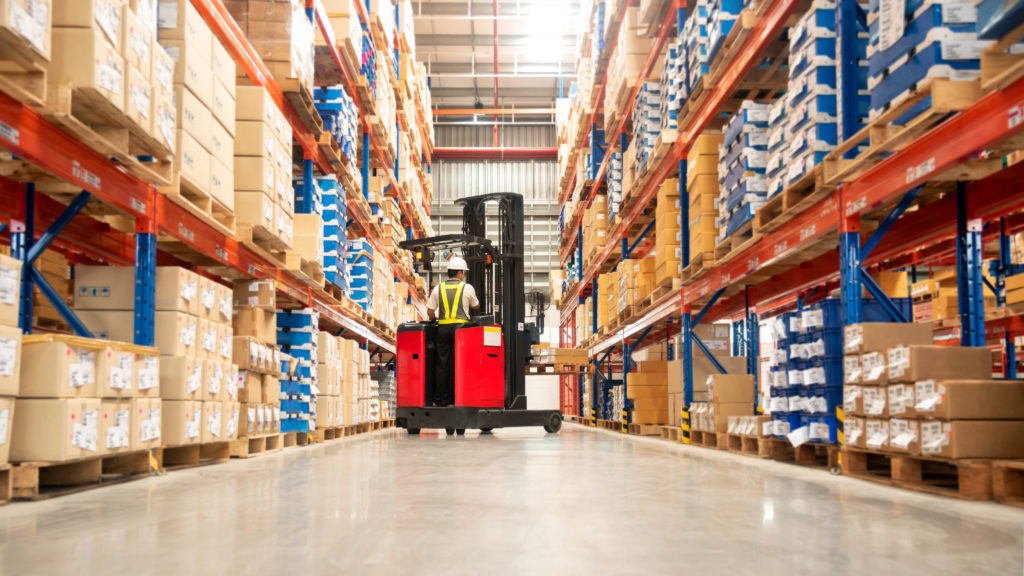3 Challenges Grocers Face with Q-Commerce (and How to Overcome Them)
Customer behaviors are transforming. The pandemic accelerated e-commerce purchases—but it hasn’t wiped out the desire to shop in-store. This brought forth a “new norm” for hybridized shopping.
Grocers scrambled to adapt to customer expectations—first, it was curbside pickup. Then it transitioned to home deliveries. Now, there’s quick commerce, or Q-commerce, which is amplifying grocery delivery models.
Getting orders to customers in less than 20 minutes? No longer a luxury—it’s a demand. Grocers that can’t keep up risk losing customers to the growing competition.
What can you do to prepare your store for the shift to faster deliveries (while maintaining efficiency and profitability)? That’s what we’ll discuss today. First, let’s review what’s happening.
Quick-commerce is now a customer preference

Q-commerce was inevitable. Once Amazon announced 2-day shipping, it changed customer expectations forever. However, that was just the beginning.
The rise in mobile shopping and technological advancements paved the way for retailers to empower their e-commerce capabilities. According to Mendel Gniwisch, CEO of Stor.ai, there will be several major shifts in the grocery industry in 2022.
When the dust settles, there will be a clear winner in ultra-rapid delivery. The only way to make it to the top is to take control of your delivery services (vs. using third-party providers), and increase in-store automation.
Today, retailers are neck-and-neck to offer the fastest delivery service. It’s especially prominent in urban areas, where customers feel it’s a must-have, and among younger generations, who are prioritizing delivery apps over streaming services.
The two-day shipping model is fading away, replaced by a keen desire for same-day delivery.
“When Amazon came out with two-day Prime [delivery], that was the most revolutionary thing. Now, people want it in 20 minutes. In 10 years, people are going to want it in five, 10 minutes. At the end of the day, people value time, so you have to keep innovating.” — Yakir Gola, co-founder and co-CEO of Gopuff.
This was always inevitable to occur, but not so soon, and not this fast (ironically). The pandemic created the perfect storm for consumers to opt for home delivery. It was the safest and most convenient alternative.
Some retailers thought this was a short-term trend and disregarded the urgency to adapt.
“With the explosion of Q-commerce recently, retailers noted the substantial uptick for convenience on-demand (real or perceived), the large rounds of funding being secured, and the overall buzz in the market. Yet, many dismissed the signals as a fad, citing the viability of the economic model, and the difference in the target customer. The internal narrative was dismissive and centered around two core ideas: They can’t make money, and this is a convenience store customer, not a grocery customer.” — Daryl Porter, Senior Partner of Global Omni Operations at Tomorrow Retail Consulting
Unfortunately, this frame of thinking placed retailers in a bind. Not only are they playing catch-up, but they must also supersede competitors in delivery speed.
How grocers are meeting the demand for Q-commerce

What makes Q-commerce a competitive arena isn’t the number of retailers in the market. It’s the “new guys” entering the scene with a focus on delivering goods the fastest.
These entrants differ from third-party delivery services like DoorDash and Instacart. They’re not teaming with grocers to offer fast delivery—they are the retailer.
Dark stores are the name of the game, and they’re using it to win at Q-commerce. Their customers are the same shoppers as grocery stores. Thanks to their business model, they can quickly deliver fresh, frozen, and pre-packaged foods. This is possible by placing dark stores throughout cities to ensure swift picking and fulfillment of orders. When a customer makes an online purchase, a gig worker or employee picks the order, and a delivery person pedals it to the customer’s home within 15 minutes.
It’s the strategy retailers need to heed if they want to compete. Tomorrow Retail has created the world’s first Dark Store tracker which shows over 10,000 dark stores in operation globally—over 90% of which are small, non-automated facilities like those being used by Gopuff. So far, we see several grocers answering the call of Q-commerce customers.
Gopuff promises to deliver groceries in under 30 minutes
Gopuff launched in 2013 as a “convenience” delivery service. It’s since expanded into grocery with the same fast delivery promise—30 minutes or less. The company has a network of micro-fulfillment centers (MFCs) to make this feasible.
They also plan to deliver hot food, coffee, alcohol, and breakfast.
Buyk builds a pipeline to cater to small shopping lists
Not all customers have a long list of groceries to stock the kitchen. Buyk is creating a pipeline designed with these shoppers in mind. The goal is to make it simple for customers to buy groceries on a whim.
For example, ordering seasonings needed to cook a meal. Or ordering a few breakfast items for surprise overnight guests.
3 challenges grocers face with quick-commerce (and the solutions)

Q-commerce is a part of building the store of the future. The grocers wanting “in” will have to overcome three challenges.
1. Increased competition: Grocers and rapid delivery companies
Companies like Gopuff are rising to the occasion to accommodate on-demand deliveries. However, it’s not just the established businesses to monitor—we’re witnessing a sleuth of new entities forming using dark store models to provide “ultrafast” deliveries.
These specialty companies operate out of 3,000 sq. ft. dark stores in cities to make it possible to deliver orders in the 10-minute timeframe.
This may eat away at grocer’s baskets and reduce in-store shopping frequency. Especially with competitors like Getir, Gorillas, and Jokr promising deliveries within 10-15 minutes.
Now, we’re seeing heavy competition among retailers to offer faster services and better selections at lower prices. According to Daryl Porter, Q-commerce players will increase their assortment, moving from just 7-11 type goods to fresh produce and pantry stocking. He estimates 40-50% of grocery trips are at risk.
Today’s omnichannel customers typically bounce between digital and physical experiences—with in-store trips responsible for the “fill-in” occasion (thanks to minimum order thresholds and higher delivery fees). What if there was a way to avoid this trip into the physical store? More than likely, customers will jump at the opportunity.
“We believe Q-commerce players will continue to expand their assortment, eroding the commonly understood 2X value of the grocers omnichannel customer. Again, this debunks the idea that ultra-fast delivery players are serving a different mission-specific shop.” — Daryl Porter
To combat this, grocers should use MFCs to bring picking and fulfillment in-house. They also need strategies to increase average order value, enhance efficiency, and increase revenue using CPG funds. This will require evolving their technology and processes to meet customers’ changing needs.
2. Being the cheapest and fastest at Q-commerce (and profitable)
If you think competing to become the best at ultra-fast grocery delivery is tough today…wait until tomorrow. Each day creates more competition and hardships for grocers to thrive.
For one, it’s a race-to-the-bottom pricing model that could drive smaller retailers into bankruptcy. One survey shows 38% of grocery CEOs are prioritizing e-commerce profitability today.
“The monumental challenge for retailers is meeting the customers’ expectations while achieving profitability. Digital grocery has more costs than a traditional store visit for a top-off order, and in most cases, consumers aren’t willing to pay more for the convenience.” — Jason Goldberg, “Retailgeek” and Chief Commerce Strategy Officer at Publicis Communications
Fortunately, there are other methods grocers can use to make this a reality. For instance, Daryl Porter says keeping delivery fees low and marking up some products can improve profits at the contribution margin level. Protect the KVI’s but play with pricing on longer tail.
A prime example of this is Gopuff, which had a per order profit at 4.9% or $1.32 (driven mainly by their pricing) This isn’t the full EBIDTA profitability, but it shows it’s possible, especially with fixed cost leverage (scale and density) and greater marketing (Customer Acquisition Costs) efficiencies.
This concept challenges how the industry thinks of customers as “price sensitive.” Plus, it pushes grocers to strip away price parity across all channels.
Will inflated prices on grocery websites cause a backlash from customers? Customer behaviors point to “no”. Shoppers don’t seem to mind paying more if it’s coupled with low delivery fees around $2.99. This gives the illusion that the cost of convenience is a steal.
“This perception drives demand and increases orders through the system, generating more fixed cost leverage and the lower customer acquisition costs they’re looking for. This debunks the idea that this business model is unprofitable. Even if the road to profitability is longer, in the short-term, ultra-fast players are capitalizing on the perceived overall value, therefore establishing a habit with consumers that allows them to target more occasions.” — Daryl Porter
Grocers that understand this are adopting technologies to increase profits. For example, Stor.ai is an e-commerce, picking, and fulfillment solution retailers use to:
- Remove bottlenecks in fulfillment processes by improving routing optimization—our customers see an average 3x improvement in units picked per hour
- Increase basket values using our AI-driven personalization platform to improve the customer experience (e.g., one-click shopping carts, enhanced searches, and personalized recommendations, ads, offers, and coupons)
- Improve customer satisfaction and loyalty using personalized AI-based recommendations
- Dispatch orders to customers using our last mile integration
We also recommend testing various pricing strategies to see what works with your customers. For example, you can try:
- Offering faster deliveries at a premium rate (within your customer base’s affordability)
- Offering low (or no) delivery fees to boost sales
- Improving efficiency with batch deliveries
- Rewarding customers for larger basket sizes (e.g., free shipping for orders over $50)
- Building a subscription model to promote repeat purchases
- Accepting EBT payments for deliveries
- Offering flat rate for delivery services
There’s no one-size-fits-all pricing model, so consider using multiple strategies to cater to different customer groups.
3. Building a lasting business model
Jumping aboard the Q-commerce bandwagon is a good idea, but only if there’s a long-term strategy behind it. Otherwise, grocers risk derailing their efforts and reputation.
For example, Gopuff expanded to over 1,000 cities in America and Europe since its launch. Then recently, it acquired two delivery companies, Fancy and Dija. It’s clear their model is to offer delivery services at scale. In fact, the company has plans to accelerate international expansion.
They’re not the only ones, which means the market is over-saturated. CB Insights shows dark convenience store space funding quintupled over the past two years to $5.67 billion.
What will come of this oversaturation? According to Coresight, consolidation in the industry is inevitable. This will lead to quick-commerce firms switching from no and low delivery fees to “reasonable” fees to ensure profitability.
“Following the influx of new entrants, the instant-needs space is looking unsustainably over-supplied and profit-challenged. Consolidation, with some nascent players falling out of the market, looks inevitable given the glut of businesses competing on such similar unique selling points and often on the same turf.” — Coresight
What can grocers do to prevent profit loss and consolidation? The first step is to become independent.
According to Jason Goldberg, retailers need to be careful about outsourcing in a low-margin environment. It’s unlikely for a retailer to be profitable when using a full-service outsourcing partner like Instacart.
So instead, they should invest in:
- Automation for picking using tech solutions like Stor.ai
- Using multiple partners and their own capacity for last mile fulfillment (Stor.ai offers an end-to-end solution through our partnerships and integrations)
- Building enough order volume to have effective route-based delivery (vs. point to point)
It’s also advised for retailers to rethink inventory and distribution strategies, like using hub stores, balancing inventory between stores, and planning demand based on digital orders.
Other experts agree—Daryl Porter states retailers should build their own fast solutions and think about their current digital channels.
“This will require a double-down of investment in their store infrastructure, creating fulfillment operations that allow them to reach their customers quickly. We believe grocers should think about every market they serve with a “multi-format fulfillment” mindset. Each node in the network, whether it be a store, a grey-store, dark-store, or an automated fulfillment center, has a role to play connected to a very clear channel-specific CVP.” — Daryl Porter
To date, retailers’ focus was on cost and capacity when considering their fulfillment operations. Now, they need to evaluate speed-to customer as a true variable in the network modeling and last mile structure.
This leaves most grocers partnering with gig platforms like Instacart and Uber Eats to fulfill Q-commerce demands. For instance, Kroger, The Giant Company, and Asda are doing this—but it’s not sustainable.
Daryl advises against relying on this short-term approach and instead focus on building “owned” ultra-fast propositions. Brand your Q-commerce services in a way that protects those “fill in” occasions and keeps customers in your owned channels.
“Retailers can’t think of ultra-fast delivery as a service they begrudgingly offer. Successful grocers have to willingly disrupt themselves and proactively drive volume to ultra-fast. It’s a fallacy to assume you’re entitled to your customers’ future orders. Great grocers need to re-win customers for each visit, and do so profitably.” — Jason Goldberg
Stor.ai’s CEO, Mendel Gniwisch, believes the most sustainable model for the future grocery store relies on MFCs:
“Having an MFC in the back fulfilling orders for pickup and delivery allows customers to shop in a market with the best butchers, fishmongers, and bakers (including digital and AR-based add-ons), while experiencing the smells, sights, and sounds only possible in person. Think Eataly alongside an ultra-high-tech warehouse. Clearly, technology like [Amazon’s] Just Walk Out is a part of this, but figuring how to make this a part of customer-first commerce and how it can be implemented profitably and at scale is still a year or two away.”
Building a sustainable (and profitable) Q-commerce model
There’s no ignoring quick-commerce—but before you join the battle to meet consumer demand, think strategy. Explore opportunities to build dark stores and micro-fulfillment centers. Then partner with several last mile services, while simultaneously creating your own.
However, this is only one part of the equation. Today’s consumers are hybrid shoppers and like to bounce from in-store to online. So adopting an omnichannel approach that caters to both scenarios is key.
Technology makes omnichannel seamless and profitable for grocers. That’s what Stor.ai does for its customers with an end-to-end AI-driven solution for e-commerce, picking, and fulfillment. The stor.ai platform was designed for today’s shopper, empowering grocers to create highly personalized customer experiences with every interaction. If you’d like to learn how Stor.ai can drive customer loyalty, increase average order values, maximize efficiency, and grow profitability, then book a demo today.
